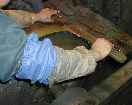| Professional Knives | Kitchen knife, machete... watanabeblade.com ŠThe other knives |
|
| Special | Standard | Professional |
| Master line for professional chefs | |||||||||||||||||||||||||||||||||||||||||||||||||||||||||||||||||||||||||||||||||||||||||||||||||||||||||||||||
|
|||||||||||||||||||||||||||||||||||||||||||||||||||||||||||||||||||||||||||||||||||||||||||||||||||||||||||||||
You find your knife!
These prices are not retail. They are already discounted prices. |
|||||||||||||||||||||||||||||||||||||||||||||||||||||||||||||||||||||||||||||||||||||||||||||||||||||||||||||||
| More custom modifications: You can send me your request so that I can quote you the price. You may indicate the size you wish, if you would like it slimmer, wider, thinner, thicker, lighter, heavier, flat backed, symmetrical bevel, custom shape, whatever you wish. We will quote your price and make your knife as you see it, making it a special and unique one-of-a-kind blade specifically for you! Secret menu "customize" I recommend you give our original scale knives a test drive at first. We have achieved these regular designs by spending over one hundred years through many generations perfecting our craft. These shapes and balances are what we believe the ideal for each blade style. I hope you try original size from our list for 1 year. After that, try your original design. For example, Honyaki is too delicate for Japanese blade beginners. Another example, a thinner blade will be sharper, but not stronger. A thicker blade will be stronger and more durable, but will not be as sharp. You can e-mail me your drawing. I will advice and give you what we can. To custom make your knife generally costs between 15% - 50% extra. Attention We use water buffalo horns for the hilt of our handles. This is a natural material and comes in several different random colors. Which means that it is not possible to choose the color for the horn. It is usually 99.99% black in color. Moreover, sometimes there are scars, dents and projections on the horn material. These occur naturally and are creations of nature. We have a policy to never waste any natural material since we have a high level of love, regard and respect for the nature around us. In fact the scars are unique and we consider them to add character and uniqueness to each individual knife rather then believe that they take away from the beauty of our work. As a matter of fact, wood is also a natural material and nobody can choose the grain and the color either. We would like to inform the customers that we cannot supply any specific colors even if we receive an order in advance. Customers should consider themselves lucky if they receive a color of their choice. We would therefore request you to abstain from making demands for any specific color. How to measure Japanese blade length: Gyuto, Deba, petite, Unagisaki, Nakkiri, Aideba and ... don't have Machi. The how to measure is blade like western knives. On the other hand, Yanagi, Usuba, Takohiki, Mioroshi, Hamokiri, Kiritsuke and ... have Machi. Then you measure from Machi to top. The picture for measure Please ask us for any further information. |
|||||||||||||||||||||||||||||||||||||||||||||||||||||||||||||||||||||||||||||||||||||||||||||||||||||||||||||||
| The Steel Used In Japanese Knives |
When people talk about traditional Japanese knives, you may hear them say
that the knives were made from "white (Shiro in Japanese)" steel
or "blue (Ao)" steel. Alternatively, they might say "white
paper (Shiro Kami)" steel or "blue paper (Ao Kami)" steel.
These are not technical standards but refer to the color of the labels
that Hitachi uses for some of their commercial grade steels. Among Japanese
manufacturers, these become "Blue Label #1, #2 or super," "White Label
#1, #2 or #3," and so on. Both types are high-carbon steels in the 1.0% to 1.2%
carbon range alloyed with silica (0.1% to 0.2%) and manganese (0.2% to
0.3%). The "blue paper" steels also have chromium (0.2% to 0.5%)
and Tungsten (1.0% to 1.5%) added for toughness. Japanese manufacturers
routinely produce knives from these steels in the Rc62 to Rc65 range, substantially
harder than any Western-style blades.
|
| To English top page |
Payment, Shipping... |
Biography |
Contact Us |
Copyright (C) Watanabe Blade. All Rights Reserved.
























